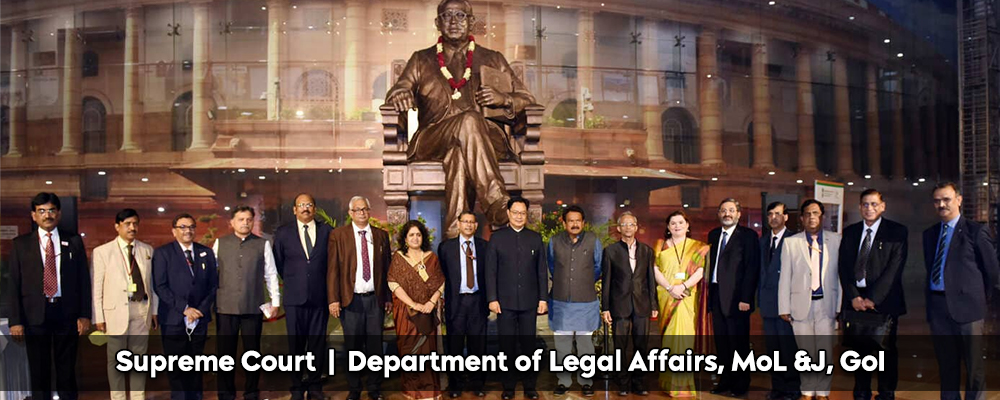Being the supreme court of the nation, the Supreme Court operates within the confines of the constitution by serving as the steward of the document and the guardian of the citizens’ basic freedoms and rights. It oversees the whole Indian legal system and serves as the translator of the laws.
The Indian Constitution stipulates in Article 124 that there must be a Supreme Court. All lower courts must abide by any ruling made by the Supreme Court. Because the Indian judiciary is independent, the traditional ideals of natural justice and morality should be upheld, and equal justice should prevail.
Need A Legal Advice
The internet is not a lawyer and neither are you. Talk to a real lawyer about your legal issue

Features
- In India, the Supreme Court, which also functions as the final court of appeal, is the highest judicial authority.
- Constitutional Cases: It deals with constitutional issues, considers appeals against High Court judgments, and deals with cases that raise important legal issues.
- Laws are interpreted by the Supreme Court, which also ensures that laws and constitutional clauses are applied consistently across the nation.
- It serves as the protector of the Indian Constitution, making sure that laws and governmental activities are by its requirements.
- Discretion: The Supreme Court does its business without interference from the executive or legislative arms of the government.
Ministry of Law and Justice, Department of Legal Affairs
The Charter Act 1833, passed by the British Parliament in 1833, is the earliest reference to the Ministry of Law and Justice of India. With the aforementioned Act, the Governor General in Council was granted exclusive legislative powers for the first time. From 1834 to 1920, legislation for the nation was passed by the Governor General in Council using this authority and the authority granted to him under section 22 of the Indian Councils Act of 1861. After the Government of India Act of 1919 went into effect, the Indian Legislature established under it wielded the legislative power. The Government of India Act 1935 was the legislation that came after the Government of India Act 1919.
After the Indian Independence Act of 1947 became law, India became a Dominion, and from 1947 to 1949 the Dominion Legislature passed laws by section 100 of the Government of India Act of 1935, as modified by the India (Provisional Constitution) Order 1947. By the Indian Constitution, which went into effect on January 26, 1950, Parliament was granted legislative authority.
Features
- Various government departments and ministries receive legal guidance and assistance from the Department of Legal Affairs.
- To ensure that bills, ordinances, and other legislative documents are legally sound, it helps while drafting legislation.
- Litigation Management: This division deals with court cases affecting the government and represents that interest in court.
- It brings together legal issues from many government ministries and divisions.
- The department participates in the development of initiatives and legal policy at the governmental level.
Similarities
- Legal Expertise: Both the Supreme Court and the Department of Legal Affairs employ Indian law experts, judges, and solicitors.
- Respect for the Law: Both organizations function within the boundaries of Indian law and the Constitution.
- Contribution to Justice: Both have a part to play in maintaining the country’s rule of law and ensuring that justice is done.
Differences
- Judicial vs. Executive: The Department of Legal Affairs is a part of the executive branch of government, whereas the Supreme Court is a judicial entity.
- Legal Support vs. Case Adjudication: While the Department of Legal Affairs represents the government in a variety of legal situations, the Supreme Court decides cases and issues rulings.
- Advisory vs. Final Decision: Supreme Court rulings are final and binding, whilst the Department of Legal Affairs serves as the government’s go-to resource and provides advice.
The Supreme Court of India is the Supreme Court in the country. The Supreme Court has a remarkably broad scope of authority and executes a wide range of tasks in the public interest. It defends a person’s fundamental rights and interprets the Constitution’s provisions using its expansive perspective. It enacts laws that are beyond dispute and binding on all other courts, and it ensures socio economic justice for India’s population.
The Ministry of Law and Justice in the Government of India is a cabinet ministry that oversees the administration of justice in India through its three departments, namely the Legislative Department, the Department of Legal Affairs, and the Department of Justice. While the Legislative Department is in charge of developing key pieces of legislation for the Central Government, the Department of Legal Affairs is responsible for counseling the various Ministries of the Central Government.
If you are searching for a Supreme Court lawyer, you can contact Lead India. Lead India offers a range of legal services, including online tools and free legal advice. The best course of action is to talk to a lawyer and ask a legal question.





 Talk to a Lawyer
Talk to a Lawyer